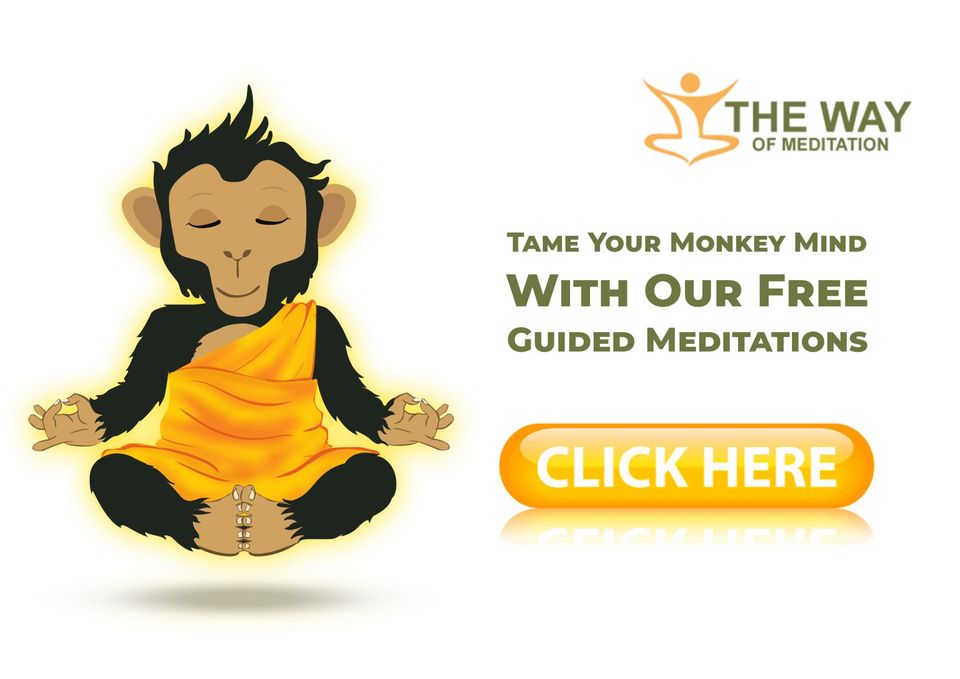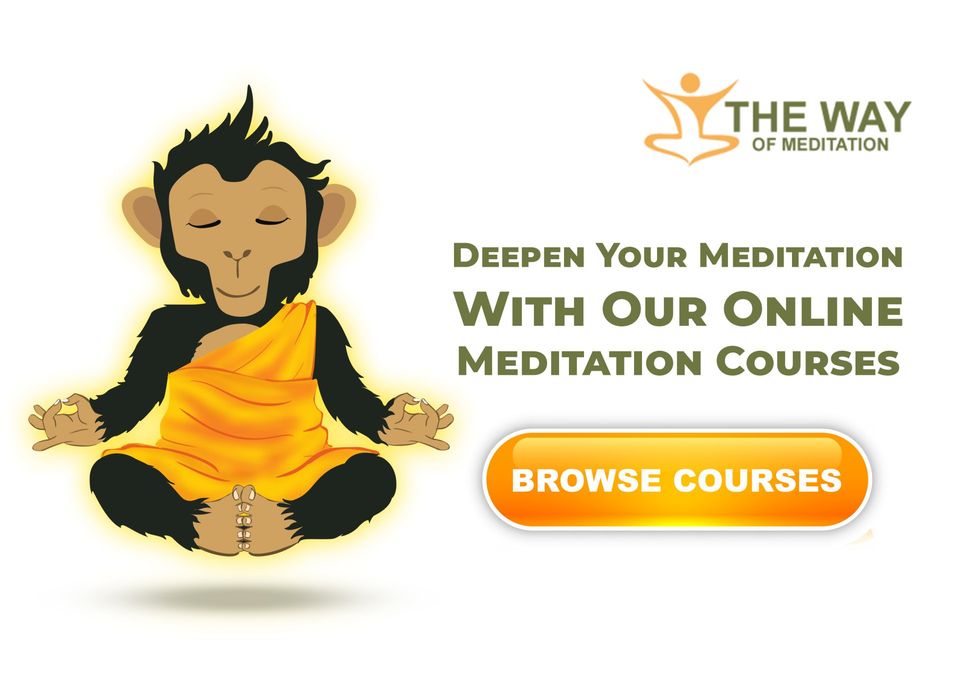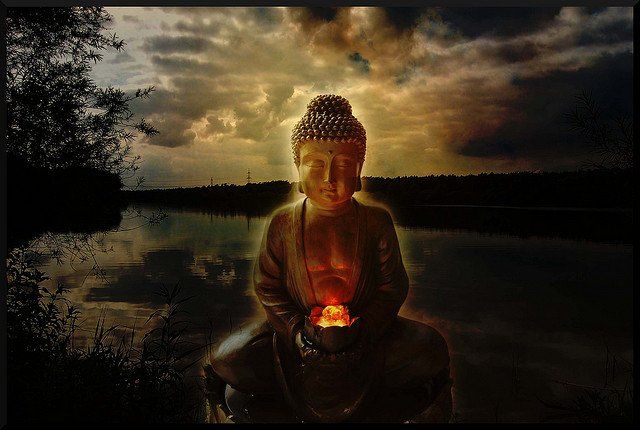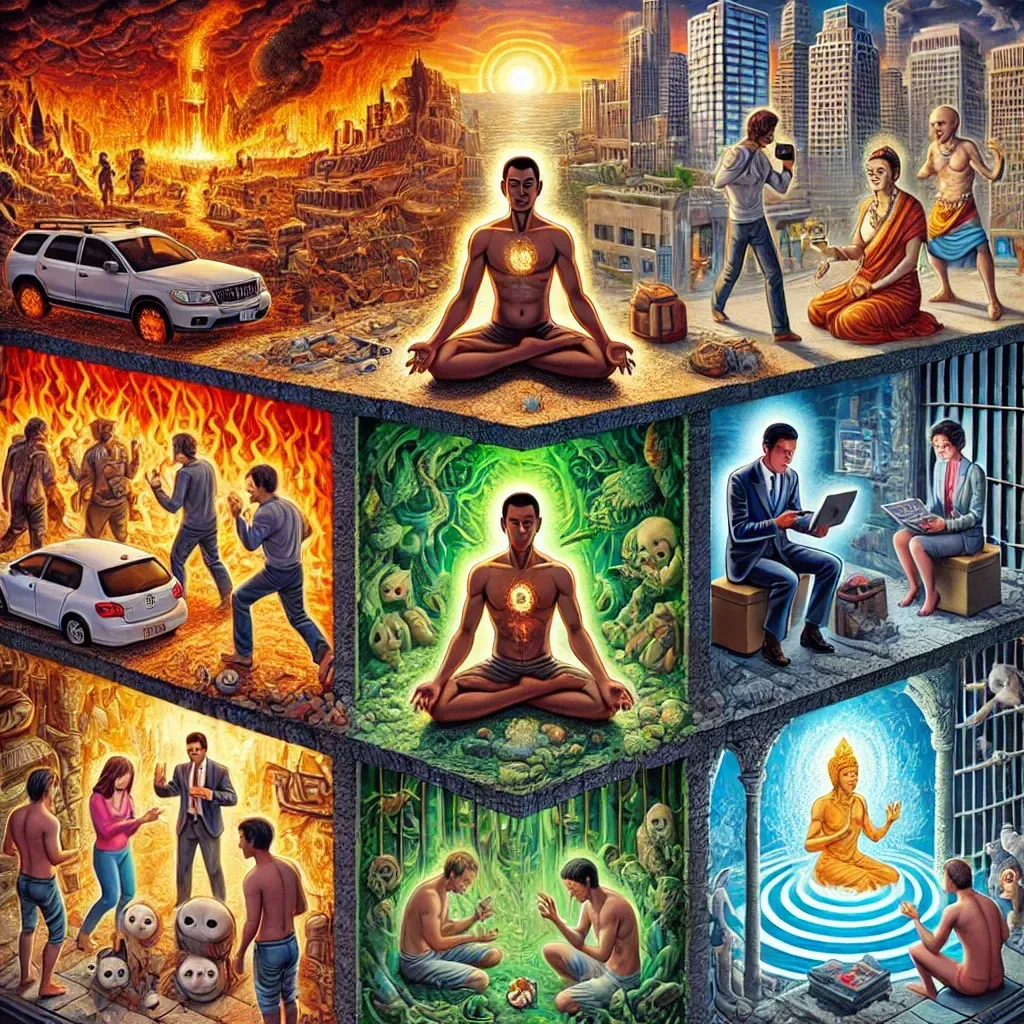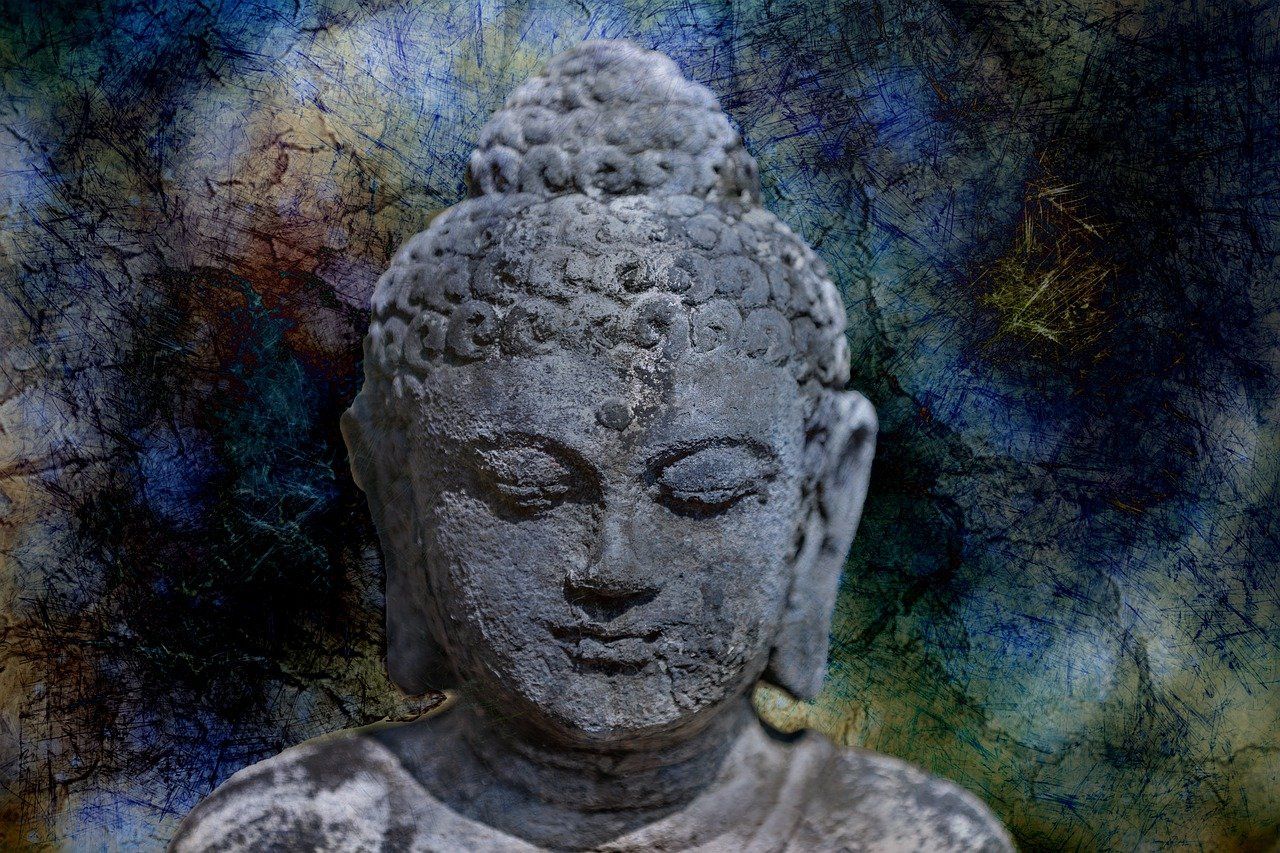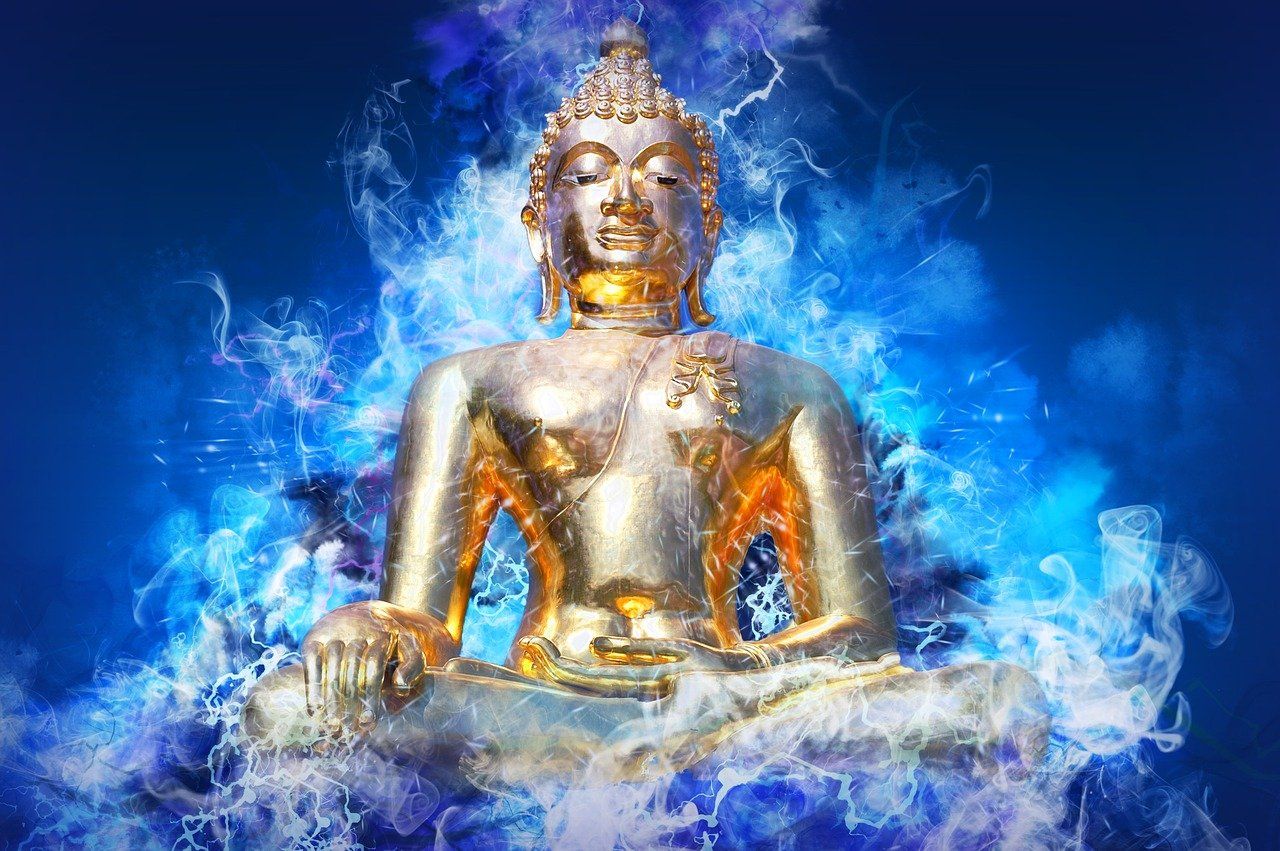The Way of Meditation Blog
Bringing Ancient Wisdom Into The Modern World
The Powerful Chinese Meditation Of Silent Illumination
Guo Gu (Dr. Jimmy Yu) • January 5, 2017
Silent Illumination
Silent illumination is a Buddhist practice that can be traced back not only to Huineng (638–713), the sixth patriarch of Chan, and other Chinese masters but also to the early teachings of the Buddha. In the Chan tradition, silent illumination is referred to as mozhao , from the Chinese characters mo (silent) and zhao (illumination).
The Chan tradition does not usually refer to steps or stages. Its central teaching is that we are intrinsically awake; our mind is originally without abiding, fixations, and vexations, and its nature is without divisions and stages. This is the basis of the Chan view of sudden enlightenment. If our mind’s nature were not already free, that would imply we could become enlightened only after we practiced, which is not so. If it’s possible to gain enlightenment, then it’s possible to lose it as well.
Silent illumination is the simultaneous practice of stillness and clarity, or quiescence and luminosity. It is similar to the practice of shamatha and vipashyana, as long as we don’t consider these sequential to each other, first practising shamatha and then practicing vipashyana. In silence there is illumination; in stillness, clarity is ever present.
We Are Already Enlightened
Consider a room, which is naturally spacious. However we organize the furniture in the room will not affect its intrinsic spaciousness. We can put up walls to divide the room, but they are temporary. And whether we leave the room clean or cluttered and messy, it won’t affect its natural spaciousness. Mind is also intrinsically spacious. Although we can get caught up in our desires and aversions, our true nature is not affected by those vexations. We are inherently free.
In the Chan tradition, therefore, practice is not about producing enlightenment. You might wonder, “Then what am I doing here, practicing?” Because practice does help clean up the “furniture” in the “room.” By not attaching to your thoughts, you remove the furniture, so to speak. And once your mind is clean, instead of fixating on the chairs, tables, and so on, you see its spaciousness. Then you can let the furniture be or rearrange it any way you want—not for yourself, but for the benefit of others in the room.
The practice of silent illumination taught by Master Sheng Yen can roughly be divided into three stages: concentrated mind, unified mind, and no-mind. Within each stage are infinite depths. You need not go through all the stages, nor are they necessarily sequential.
CONCENTRATED MIND
The first stage of practice is learning to sit in an contrived way, not trying to get this or get rid of that. You just sit with clarity and simplicity in the moment. In Chinese, this is called zhiguan dazuo , which means “just mind yourself sitting.”
To just sit is to be aware that you are sitting. When you’re sitting, can you feel the presence of your whole body—its posture, weight, and other sensations? “Just sitting” means, at the very least, you know clearly that the whole body is there. It doesn’t mean minding any particular part of your body—just your legs, arms, or posture—or feeling every sensation of the body. The idea is to be aware of the general totality of your sitting experience. The body is sitting; you know this. This means your mind is sitting, too. So the body and mind are together as you’re sitting. If you don’t know you’re sitting, then you’re not following the method.
This method is subtle; it’s not like counting breaths from one to ten, which is very concrete. But that doesn’t mean there is nothing to do. There is definitely something to do: Sit!
This method does not involve contemplating, observing thoughts, or continually scanning the body. Instead, it involves minding the act of sitting, staying with that reality from moment to moment to moment. When you mind your sitting, your body and mind are naturally together. You don’t watch the body or imagine it, as if you’re looking in from the outside, which is some kind of mental construct.
When you practice single-mindedly and intensely, with no gaps, for half an hour, your body might become drenched in sweat. But this traditional, tense way of practicing the method is not suitable for most present-day practitioners because so many are already stressed out in daily life. (Another limitation of the tense way is that it cannot be sustained for a long period of time, half an hour to an hour at most.) So it’s generally advisable to practice the method in a relaxed way, while continuing to be fully aware that you’re sitting.
In the Chan tradition, therefore, practice is not about producing enlightenment. You might wonder, “Then what am I doing here, practicing?” Because practice does help clean up the “furniture” in the “room.” By not attaching to your thoughts, you remove the furniture, so to speak. And once your mind is clean, instead of fixating on the chairs, tables, and so on, you see its spaciousness. Then you can let the furniture be or rearrange it any way you want—not for yourself, but for the benefit of others in the room.
The ultimate way to practice silent illumination is to sit without dependence on your eyes, ears, nose, tongue, body, or mind. You sit without abiding anywhere, fabricating anything, or falling into a stupor. You neither enter into meditative absorption nor give rise to scattered thoughts. In this very moment, mind just is— wakeful and still, clear and without delusion. However, for many practitioners, such a standard can prove too high.
Three Stages of Silent Illumination
CONCENTRATED MIND
The first stage of practice is learning to sit in an contrived way, not trying to get this or get rid of that. You just sit with clarity and simplicity in the moment. In Chinese, this is called zhiguan dazuo , which means “just mind yourself sitting.”
To just sit is to be aware that you are sitting. When you’re sitting, can you feel the presence of your whole body—its posture, weight, and other sensations? “Just sitting” means, at the very least, you know clearly that the whole body is there. It doesn’t mean minding any particular part of your body—just your legs, arms, or posture—or feeling every sensation of the body. The idea is to be aware of the general totality of your sitting experience. The body is sitting; you know this. This means your mind is sitting, too. So the body and mind are together as you’re sitting. If you don’t know you’re sitting, then you’re not following the method.
This method is subtle; it’s not like counting breaths from one to ten, which is very concrete. But that doesn’t mean there is nothing to do. There is definitely something to do: Sit!
This method does not involve contemplating, observing thoughts, or continually scanning the body. Instead, it involves minding the act of sitting, staying with that reality from moment to moment to moment. When you mind your sitting, your body and mind are naturally together. You don’t watch the body or imagine it, as if you’re looking in from the outside, which is some kind of mental construct.
When you practice single-mindedly and intensely, with no gaps, for half an hour, your body might become drenched in sweat. But this traditional, tense way of practicing the method is not suitable for most present-day practitioners because so many are already stressed out in daily life. (Another limitation of the tense way is that it cannot be sustained for a long period of time, half an hour to an hour at most.) So it’s generally advisable to practice the method in a relaxed way, while continuing to be fully aware that you’re sitting.
Getting to know and learning to relax your body can free you from habitual tendencies and negative emotions. You may notice that when wandering thoughts arise, some parts of your body tense up. The same is true for deep-seated emotions, which are lodged in particular places of the body. Often, people live their lives in such a way that their bodies and minds are split; they do one thing with their bodies while their minds are elsewhere. Practising this first stage helps body and mind be more unified.
When you are wakeful and clear in each moment and not caught up with wandering thoughts, they subside of their own accord. They subside because your discriminating mind, which is tied to self-grasping, lessens. Your discriminating mind lessens because you’re aware of the totality of the body as you are sitting. Without wandering thoughts, you are not grasping at this and that, nor attracted to or repulsed by particular sensations. The concentration developed in the first stage of silent illumination is not a one-pointed focus of mind but an open, natural, and clear presence. It is concentration accompanied by wisdom.
UNIFIED MIND
When your discriminating mind diminishes, your narrow sense of self diminishes as well. Your field of awareness—which is at first the totality of the body—naturally opens up to include the external environment. Inside and outside become one. In the beginning, you may still notice that a sound is coming from a certain direction or that your mind follows distinct events within the environment, such as someone moving. But as you continue, these distinctions fade. You are aware of events around you, but they do not leave traces. You no longer feel that the environment is out there and you are in here. The environment poses no opposition or burden. It just is. If you are sitting, then the environment is you, sitting. If you have left your seat and are walking about, then the environment is still you, in all of your actions. This experience, the second stage of silent illumination, is called the oneness of self and others.
Can you still hear sounds? Yes. Can you get up to have a drink of water or urinate? Of course. Is there mentation? Yes. You have thoughts as you need them to respond to the world, but they are not self-referential. Compassion naturally arises when it is needed; it has nothing to do with emotion. There is an intimacy with everything around you that is beyond words and descriptions. When you urinate, the body, urine, and toilet are not separate. Indeed, you all have a wonderful dialogue!
In this stage, you see clearly what needs to be done. You see how to respond, but without any reference point or opposition . If you hear a bird, you are a bird. When you interact with a person, your mind is not stirred. You see things as one; they are part of you, and you are part of them. It’s not that you think, “They are part of me and I’m really big! I include the whole world!” Nor is it that you dissolve into the external environment, not knowing who you are anymore. It is just that the sense of self-reference is diminished and the burdens of normal vexations have temporarily vanished.
There are progressively deeper states of this second stage. When you enter a state in which the environment is you sitting, the environment may become infinite and boundless, bringing about a state of oneness with the universe. The whole world is your body sitting there. Time passes quickly and space is limitless. You are not caught up in the particulars of the environment. There is just openness of mind, clarity, and a sense of the infinite. This is not yet the realization of no-self; it is the experience of great self.
At this point, three subtler experiences may occur, all related to the sense of great self. The first is infinite light. The light is you, and you experience a sense of oneness, infinity, and clarity.
The second experience is infinite sound. This is not the sound of cars, dogs, or something similar. Nor is it like music or anything else you have ever heard. It is a primordial, elemental sound that is one with the experience of vastness. It is harmonious in all places, without reference or attribution.
The third experience is voidness. But this is not the emptiness of self-nature or of no-self that would constitute enlightenment. This is a spacious voidness in which there is nothing but the pure vastness of space. Although you do not experience a sense of self, a subtle form of self and object still exists.
These progressively deeper states are all related to samadhi states. When you emerge from them, you must try not to think about them anymore because they are quite alluring. Say to yourself, “This state is ordinary; it’s not it.” Otherwise, it will lead to another form of attachment.
When you are wakeful and clear in each moment and not caught up with wandering thoughts, they subside of their own accord. They subside because your discriminating mind, which is tied to self-grasping, lessens. Your discriminating mind lessens because you’re aware of the totality of the body as you are sitting. Without wandering thoughts, you are not grasping at this and that, nor attracted to or repulsed by particular sensations. The concentration developed in the first stage of silent illumination is not a one-pointed focus of mind but an open, natural, and clear presence. It is concentration accompanied by wisdom.
UNIFIED MIND
When your discriminating mind diminishes, your narrow sense of self diminishes as well. Your field of awareness—which is at first the totality of the body—naturally opens up to include the external environment. Inside and outside become one. In the beginning, you may still notice that a sound is coming from a certain direction or that your mind follows distinct events within the environment, such as someone moving. But as you continue, these distinctions fade. You are aware of events around you, but they do not leave traces. You no longer feel that the environment is out there and you are in here. The environment poses no opposition or burden. It just is. If you are sitting, then the environment is you, sitting. If you have left your seat and are walking about, then the environment is still you, in all of your actions. This experience, the second stage of silent illumination, is called the oneness of self and others.
Can you still hear sounds? Yes. Can you get up to have a drink of water or urinate? Of course. Is there mentation? Yes. You have thoughts as you need them to respond to the world, but they are not self-referential. Compassion naturally arises when it is needed; it has nothing to do with emotion. There is an intimacy with everything around you that is beyond words and descriptions. When you urinate, the body, urine, and toilet are not separate. Indeed, you all have a wonderful dialogue!
In this stage, you see clearly what needs to be done. You see how to respond, but without any reference point or opposition . If you hear a bird, you are a bird. When you interact with a person, your mind is not stirred. You see things as one; they are part of you, and you are part of them. It’s not that you think, “They are part of me and I’m really big! I include the whole world!” Nor is it that you dissolve into the external environment, not knowing who you are anymore. It is just that the sense of self-reference is diminished and the burdens of normal vexations have temporarily vanished.
There are progressively deeper states of this second stage. When you enter a state in which the environment is you sitting, the environment may become infinite and boundless, bringing about a state of oneness with the universe. The whole world is your body sitting there. Time passes quickly and space is limitless. You are not caught up in the particulars of the environment. There is just openness of mind, clarity, and a sense of the infinite. This is not yet the realization of no-self; it is the experience of great self.
At this point, three subtler experiences may occur, all related to the sense of great self. The first is infinite light. The light is you, and you experience a sense of oneness, infinity, and clarity.
The second experience is infinite sound. This is not the sound of cars, dogs, or something similar. Nor is it like music or anything else you have ever heard. It is a primordial, elemental sound that is one with the experience of vastness. It is harmonious in all places, without reference or attribution.
The third experience is voidness. But this is not the emptiness of self-nature or of no-self that would constitute enlightenment. This is a spacious voidness in which there is nothing but the pure vastness of space. Although you do not experience a sense of self, a subtle form of self and object still exists.
These progressively deeper states are all related to samadhi states. When you emerge from them, you must try not to think about them anymore because they are quite alluring. Say to yourself, “This state is ordinary; it’s not it.” Otherwise, it will lead to another form of attachment.
You might be in the initial phase of the second stage of silent illumination for a few minutes or a few months. During this time, nothing obstructs you—when you are sitting, you feel the environment is you, sitting; when you are walking about, you feel connected with the environment. In the later phase of the second stage, you may even think you are enlightened because the deeper levels of oneness are so profound. Practitioners sometimes think they have suddenly become smarter or understood all the scriptures.
All these states of clarity are wonderful; they give you a strong conviction in the usefulness of buddhadharma and the possibility of a state free from vexations. However, they still do not represent the clarity of the third stage—the realization of silent illumination. Become attached to any of these states and you will be further from them. All of them must be let go.
NO-SELF, NO-MIND
The clarity of the second stage is like looking through a spotless window. You can see through it very well, almost as if the window were not there, but it is there. In the second stage, the self lies dormant but subtle self-grasping is present. In other words, seeing through a window, even a very clean one, is not the same as seeing through no window at all. Seeing through no window is one way of describing the state of enlightenment, which is the third stage. In utter clarity, the mind is unmoving. Why? Because there is no self-referential mind.
The third stage of silent illumination is the realization of quiescence and wakefulness, stillness and awareness, samadhi and prajna, all of which are different ways to describe mind’s natural state. Experiencing it for the first time is like suddenly dropping a thousand pounds from your shoulders—the heavy burdens of self-attachment, vexations, and habitual tendencies. Prior to that, you may not know exactly what self-attachment or vexations are. But once you are free from them, you clearly recognize them.
Self-attachment, vexations, and habitual tendencies run deep. So practitioners must work hard to experience enlightenment again and again until they can simply rest in mind’s natural state. The key is to practice diligently but seek no results.
By practicing in this way, our life gradually becomes completely integrated with wisdom and compassion, and even traces of “enlightenment” vanish. We are able to offer ourselves to everyone, like a lighthouse, helping all those who come our way, responding to their needs without contrivance. This is the perfection of silent illumination.
You might ask, “I’ve been practicing for ten years now—exactly when is this going to happen to me?” The difference between delusion and enlightenment is only a moment away. In an instant, you can be free from the constructs of your identity and see through the veil of your fabrications.
Remember that practice is much more than following a particular method or going through stages on a path. Practice is life and all of its “furniture.” Practice helps us see the room and not attach to the furniture. Enlightenment is not something special—it is the natural freedom of this moment, here and now, unstained by our fabrications.
All these states of clarity are wonderful; they give you a strong conviction in the usefulness of buddhadharma and the possibility of a state free from vexations. However, they still do not represent the clarity of the third stage—the realization of silent illumination. Become attached to any of these states and you will be further from them. All of them must be let go.
NO-SELF, NO-MIND
The clarity of the second stage is like looking through a spotless window. You can see through it very well, almost as if the window were not there, but it is there. In the second stage, the self lies dormant but subtle self-grasping is present. In other words, seeing through a window, even a very clean one, is not the same as seeing through no window at all. Seeing through no window is one way of describing the state of enlightenment, which is the third stage. In utter clarity, the mind is unmoving. Why? Because there is no self-referential mind.
The third stage of silent illumination is the realization of quiescence and wakefulness, stillness and awareness, samadhi and prajna, all of which are different ways to describe mind’s natural state. Experiencing it for the first time is like suddenly dropping a thousand pounds from your shoulders—the heavy burdens of self-attachment, vexations, and habitual tendencies. Prior to that, you may not know exactly what self-attachment or vexations are. But once you are free from them, you clearly recognize them.
Self-attachment, vexations, and habitual tendencies run deep. So practitioners must work hard to experience enlightenment again and again until they can simply rest in mind’s natural state. The key is to practice diligently but seek no results.
By practicing in this way, our life gradually becomes completely integrated with wisdom and compassion, and even traces of “enlightenment” vanish. We are able to offer ourselves to everyone, like a lighthouse, helping all those who come our way, responding to their needs without contrivance. This is the perfection of silent illumination.
You might ask, “I’ve been practicing for ten years now—exactly when is this going to happen to me?” The difference between delusion and enlightenment is only a moment away. In an instant, you can be free from the constructs of your identity and see through the veil of your fabrications.
Remember that practice is much more than following a particular method or going through stages on a path. Practice is life and all of its “furniture.” Practice helps us see the room and not attach to the furniture. Enlightenment is not something special—it is the natural freedom of this moment, here and now, unstained by our fabrications.
Written By Guo Gu
Guo Gu (Jimmy Yu) received inka from the late Chan Master Sheng Yen in 1995 and served as his assistant and translator until Sheng Yen’s death in 2009. He is the Sheng Yen Assistant Professor of Chinese Buddhism at Florida State University and the founder of the Tallahassee Chan Group. His new ebook is The Essence of Chan.
Get A FREE
Guided Meditation Series
with Chad Foreman
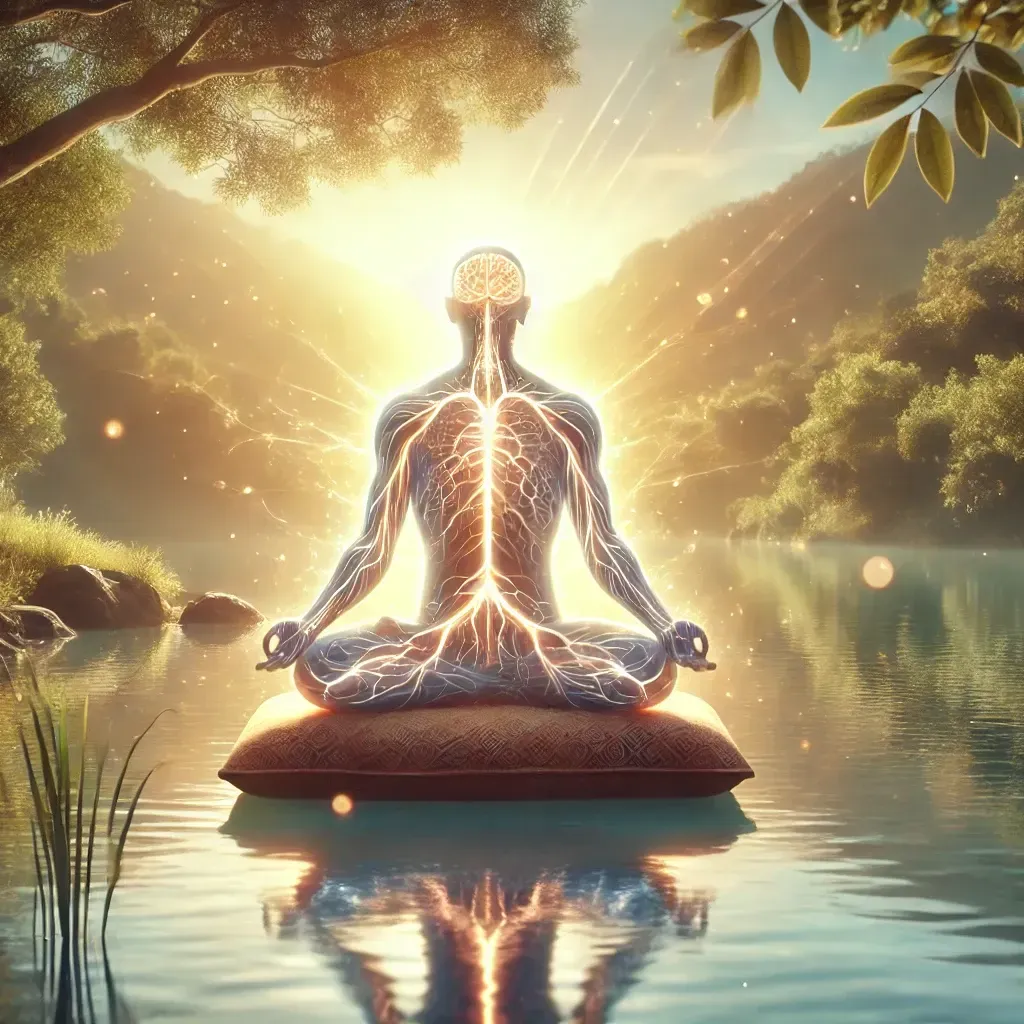
In today’s fast-paced world, the mind often races, driven by the demands of work, family, and personal ambitions. Meditation is commonly seen as a practice to calm the mind, foster inner peace, and connect with deeper aspects of existence. Yet, one crucial element often overlooked is the state of the body, particularly the nervous system. Relaxing the nervous system isn’t just a preparatory step; it is foundational for unlocking the deeper states of awareness and tranquility that meditation promises. Drawing insights from my journey and teachings, we will explore why this is so vital and how it transforms the meditative experience.




